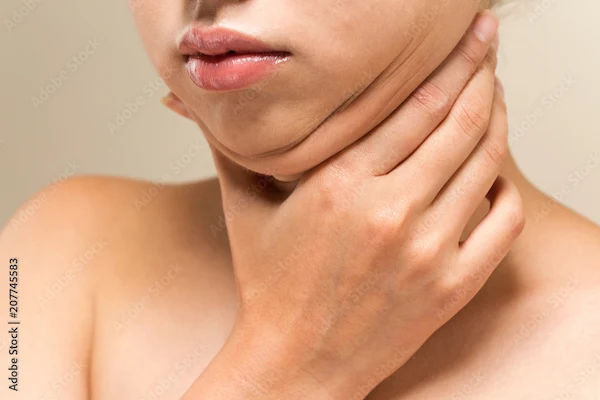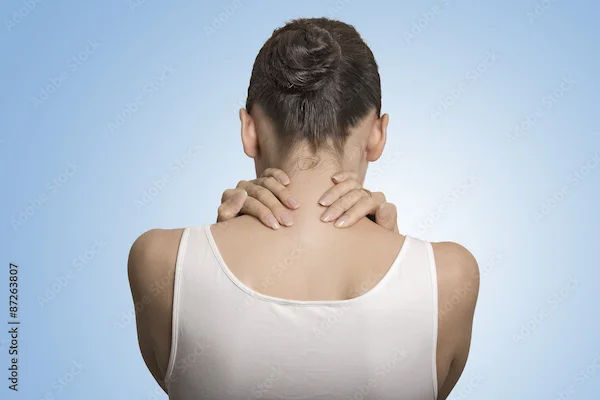How To Reduce Neck Hump?
Learn the best methods to reduce neck hump and improve posture. Discover exercises, treatments, and lifestyle changes to alleviate discomfort and prevent worsening.

Written by
Last updated on 3rd Jul, 2025
A neck hump or dowager's hump is a spinal condition that occurs due to a forward-leaning posture. This condition is medically known as kyphosis. In general, the spine has a natural curve that helps humans to stand straight and maintain a good posture when sitting. However, bad posture habits result in an unusual curve in the upper vertebra. It finally leads to a neck hump. People with this issue often have rounded shoulders, stiffness on shoulder blades and back, tight hamstrings, etc. However, people can get rid of this problem by practising the right exercises and body postures.
Anatomy of the Neck
The neck is a complex body part that contains several bones, nerves, blood vessels, muscles, and other tissues. The cervical spine is a significant bone that lies in the neck. A portion of the spinal cord connects the upper body, hands, and arms. It directs nerve signals between the lower body and the brain. These nerves are bunched into tracts.
Also, spongy cushions between the vertebrae in the spine, called intervertebral disks, play a significant role in maintaining neck health. When these disks bulge, they pinch the spinal cord or the nerve roots. It leads to medical conditions such as cervical radiculopathy and cervical myelopathy. These will cause pain, numbness or weakness. If the cervical region is severely injured, it will lead the body to become paralysed.
The postures refer to the body's natural alignment when sitting, standing, or moving. Postures play a vital role in maintaining good neck and shoulder health. Good posture promotes the natural curves of the spine. It also reduces unnecessary strain on muscles and joints of the neck, shoulders, and back. Additionally, the postures help to prevent sports injuries.
Identifying the Cause
The most common cause behind the neck hump is a habit of poor posture. These postures make the chest and neck muscles tight while weakening the neck and upper back..
Also, there may be other medical conditions related to neck hump. These include -
Osteoporosis: It causes spinal compression, increasing the forward bend. It causes a bump on the upper back and extends the neck.
Degenerative changes in the spine: The spine slowly loses its natural structure and function.
Underlying bony or ligamentous pathologies: These indicate fractures, infections, calcifications, and tumours of spinal ligaments.
Congenital problem: Deformed spine from birth.
Exercises to Correct Neck Hump
By practising stretching techniques and strengthening exercises, people can avoid this issue. Repeat all these exercises 10 times. The stretching techniques include -
Neck rotation: Sit straight in a chair facing forward. First, turn the head to the right and look over the shoulder as much as possible without pain. Hold the posture for 5 breaths. Again, turn the head to the left and repeat the same posture for 5 breaths.
Jaw opening: Sit straight and gently open the mouth as wide as possible. Ensure there is no discomfort or pain while opening the jaw. Hold the position for 5 breaths. Then, relax the jaw.
Arm raises: Stand up tall. Raise the arms gently until it makes a stretch on the shoulders or neck. Ensure the arms are holding up by facing forward. Try to keep the arms even and hold the position for 5 breaths.
Furthermore, they should practise these strengthening exercises to support the neck muscles and upper back. Here are some simple strengthening exercises -
Chin tucks: Pull the chin straight to the back 10 times with 3 sets daily. It not only strengthens the neck muscles but also supports the neck disks.
Doorway pectoral stretches: Stand in an open doorway and raise your hands like a goalpost. Ensure the palms are forward-facing, then place them on the door frame. After that, keep one step forward and put a stretch across the chest. Hold this posture for 20-30 seconds 3 times daily.
Scapular squeezes: Squeeze the shoulder blades together 10 times daily in a set of 3. It improves the upper back muscles.
Lifestyle Modifications
To avoid the neck hump, people must maintain good body posture while working, sitting, or walking. For this reason, people should adjust the furniture and other equipment to support a healthy body posture. They should apply these modifications in both their home and workplace. These will help to prevent neck pain, injuries, and other health problems. Also, these will improve body flexibility and balance.
Yoga and pilates are the natural treatment for neck hump. Yoga helps soothe pain, enhance mobility, and improve mood and quality of life. Pilates promotes entire spinal health and improves spinal damage. It also strengthens core and back muscles, further improving postures.
Medical Interventions
Doctors may suggest physical therapy to improve neck health. Otherwise, they will suggest surgical treatments. There are three surgical options for neck hump. These are posterior, anterior, and combined procedures. The posterior procedure improves the flexibility of the area of the neck hump. Anterior strategy slightly improves the neck hump. However, this procedure requires further research and study. The combined procedure provides uncertain results and needs several improvements.
Preventive Measures
Maintaining good posture is vital for life-long health. So, individuals must maintain good dynamic (moving) and static (not moving) postures.
So, follow these tips to maintain good dynamic postures -
Maintaining a healthy weight is essential for the spine, pelvis, and abdominal muscles.
Stay active by participating in yoga, stretching, and other exercises.
Wear comfortable and low-heeled shoes to avoid the stress of leg muscles.
Also, follow these strategies to hold a good static posture while sitting-
Switch the sitting positions often.
Ensure the shoulders are in relaxing positions. They should not be pulled backwards or rounded.
The legs shouldn't be crossed. They should be kept on the floor with the ankles.
Ensure the back is entirely supported. If the chair doesn't provide enough support, put a pillow or other back support on it.
Take a small walk for some time and gently stretch the muscles.
Follow these guidelines while standing -
Always stand straight and tall.
Ensure the shoulders are in the back and the stomach is inside.
Try to put the body weight on the balls of the feet.
Keep the head straight.
Let the hands hang down naturally from the body side.
Side by side, regular physical activities also positively impact human health.
It reduces stress and enhances the happy hormones.
Exercise boosts endurance and muscle strength. It helps to send oxygen and nutrients into the tissues and eases cardiovascular activities.
It prevents the body from gaining excessive weight and combats diseases.
When to See a Doctor
People should go to a healthcare provider if their neck hump causes pain or they have boils that don't improve by in-home treatments. For older people, it's necessary to see a doctor if they notice any curve on their spine.
So, people must understand the right time for medical intervention for this problem. They must pay attention to these complications and immediately go to the doctor.
Fractures due to osteoporosis
Severe rounding on the upper back
Boils and carbuncles, including sepsis and scarring
Moles that are growing and cause itching, bleeding, and becoming darker
Consult Top Orthopaedicians for Expert Advice
Conclusion
Till now, there is no medication or professional treatment available for neck hump reduction. The best treatment is to promote healthy posture and participate in regular exercise. As the neck is the part of the spinal cord, it's crucial to maintain spine health. Also, people should increase their muscle strength and improve joint mobility.
Consult Top Orthopaedicians for Expert Advice
Dr. Anil Sharma
Orthopaedician
42 Years • MBBS, MS Orthopedics
New Delhi
AAKASH MEDSQUARE, New Delhi

Dr. Sourav Kumar Pal
Orthopaedician
3 Years • MBBS, MS(ORTHO)
Malda
B S ORTHO, Malda

Dr. Mriganka Ghosh
Orthopaedician
11 Years • MD (Physician), DNB (Orthopaedics)
Howrah
Dr Mriganka Mouli Ghosh, Howrah

Dr. Pradeep Lucas
Orthopaedician
7 Years • MBBS, Diploma in Orthopaedics, Fellowship in DFSI
Bengaluru
Revival Multispeciality Clinic, Bengaluru

Dr. Manoj Dinkar
Orthopaedician
15 Years • MBBS, Dip (Orthopaedics)
New Delhi
THE DOCTORS NESST, New Delhi

.webp)

